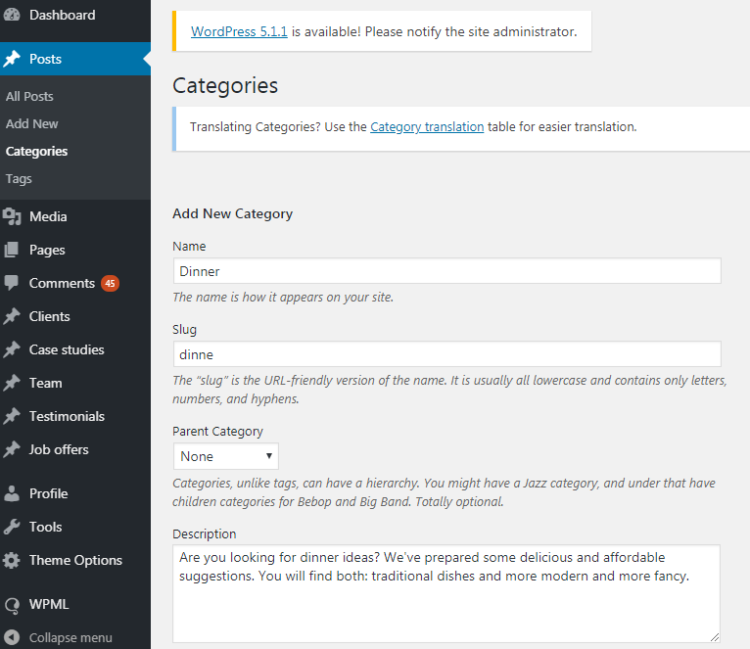Categories and Tags on the Blog. How to Use Them to Your Advantage?

Categories and tags are two independent, different as chalk and cheese systems of organizing content on your blog. They can be used simultaneously, nevertheless, if you do it in an ill-considered way, you may encounter problems with visibility in search engines.
Imagine that you’re just publishing a new entry on your blog. You’ve prepared a great, substantive text that looks impressive and is optimized according to SEO guidelines (H2, strong, title, meta description, friendly URL). Moreover, you’ve even provided all the graphics with alternative descriptions. Everything seems to be ready and all you need to do is to click the “publish” button when suddenly you notice the empty “tags” field. And what to type there?
What is a tag?
Many treat tags as another space for keywords and hope that it will somehow help them to get more traffic to the website. However, it won’t happen if tags are used in an ill-thought out way. But before analyzing how to apply tags correctly, let’s find out what they actually are.
Tags had been created before the first idea of blogging even emerged. The reliable source of knowledge in the Internet says that tags are:
characters or keywords assigned to a specific piece of information such as a text or multimedia file.
source: https://en.wikipedia.org/wiki/Tag_(metadata)
Tags are commonly used on blogs, social media or in various databases. Thanks to them, you can quickly filter out content related to a specific topic. When it comes to blogging activities, they can be used to group entries so that a user interested in a particular topic doesn’t have to go through all the posts on your blog. But wait… shouldn’t the categories be responsible for that?
Categories and tags are two diverse, independent of each other methods of organizing blog content. They can be used simultaneously, nevertheless, unless you create a well-thought out system, using them at the same time can cause a disastrous mess and problems with the position of your website in the search results.
Don’t overuse tags
With each tag added an additional subpage with a list of entries with a given tag appears on your blog. Most often you can find there titles, short snapshots of particular posts and featured images. Adding tags thoughtlessly on the basis of associations with the given text after some time can lead to a huge number of tags on the blog, which, in turn, may mean keyword cannibalization, duplicate content or creation of numerous subpages of low value.
- If tags duplicate names of categories or entries, it leads to keyword cannibalization. In such situation, search engines don’t know which subpage to display first: whether it should be an entry or a page grouping content with the unfortunate tag. As a consequence you’ll have to face ranking fluctuations resulting from the fact that probably both of the abovementioned subpages will appear alternately in the search results.
- Using similar tags for the same articles is also a very common mistake. If you assign the same entries to two various tags, you’ll get two subpages with exactly the same content – and that’s duplicate content. And again, you need to face the music because of your position in the search results. Unreasonable use of tags can lead to duplication of subpages of individual tags or duplication of subpages of tags and categories.
- On the other hand, if you use a given tag only once, it’ll mean generating a subpage whose content will be a snapshot to only one entry. The more “single-use” tags you’ve, the more subpages of very low value are generated. Providing a given entry with a few tags that aren’t used again is even a worse scenario as the blog creates several subpages of the same, very low value.
What is the difference between tags and categories?
So, is tagging a bad thing that you’d better not do to yourself? Tags weren’t invented for nothing but in order to understand their function we need to discuss how they differ from categories.
| Categories | Tags |
| obligatory | optional |
| may be hierarchical | hierarchically unrelated |
| general topics | specific topics |
| most often one entry = one category | one entry can be related to several tags |
| like a table of contents in a book | like an index of contents |
Categories are the default method of organizing content on the blog – they’re very precise and allow you to create a wide, hierarchical structure (categories and subcategories). Just a glance at the categories on a given blog enables the visitors to immediately determine its subject matter. The number of categories depends on the size of your blog, nevertheless, if you don’t write about “everything and nothing” there should be maximally a few categories and they can be compared to a table of contents in a book.
On the other hand, tags are generally used for a more detailed and not hierarchical description of the content on the blog. While each entry is always assigned to a category (for example, “no category” is the default category for WordPress), tags aren’t mandatory. You can add several tags to one entry at the same time. Just as categories correspond to the table of contents, tags are equivalent to the index of contents.
Tags have two main functions. First, they describe the text and tell users and search engine robots what the blog is about. Second, they allow you to group entries regardless of their category.
Let’s have an example.
You’ve a culinary blog. To group and organize entries, you create categories such as breakfast, lunch, dinner, snacks, work or desserts. On the other end of the spectrum, the main ingredients used to prepare meals are used as tags. However, it doesn’t mean that you should create a tag for every product. Just try to imagine what would be assigned to the “salt” tag
How to use tags?
Even a well-thought-out list of tags on the blog will be extended as new content is created. It’s one of the reasons why it’s particularly important to reconsider your system of categorizing and tagging the content on your blog. Try not to lead to a situation when different tags are assigned to only one entry or when several various posts have exactly the same tags.
It’s also advisable to create a unique description for each category and tag because it’ll increase the diversity of content on subpages from the archive of the tag/category. Moreover, such descriptions will make it easier for robots to understand the content of your site. Remember to note how the template you use display the entries. If the whole text is shown, you should definitely alter the page so that it shows only some snapshots.
If you use tags, make sure that a list of tags assigned to given content is shown right next to the entry because this option isn’t default for every template. Since you’ve already ensured the logical layout of tags and created their descriptions, it’s also worth taking care of this aspect. Maybe you should consider using a tag cloud which will display the most popular tags on the blog? Such a solution will not only facilitate browsing the content you’ve prepared but it’ll also help the users to find what they’re interested in.
Following the above guidelines guarantees that your content will be neatly grouped by subpages of tags and categories. Each of these elements will display different kinds of snapshots. This way, you’ll not only generate extra subpages with valuable and diverse content but also strengthen the internal linking.
To conclude
Remember that your blog is created primarily for users, not for the search engine robots. If you design your blog in a way that it’s useful and convenient for people, it’ll also bear fruit when it comes to SEO. Perceive your blog as a book that is constantly being written. Choose categories that will present your content clearly and comprehensively. Remember about using tags to link posts from various categories. If necessary, keep in mind that you don’t have to stick to the original method of grouping your entries. However, when making changes, don’t forget about redirections to new url addresses.




